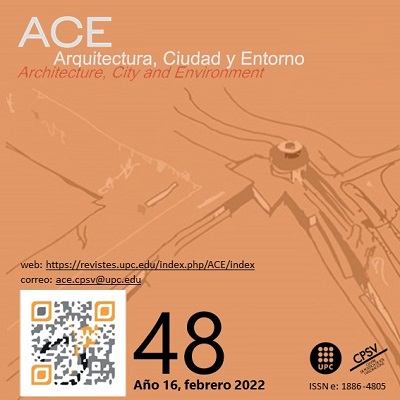Hybrid Housing as the Answer to the Changing Needs of Contemporary Society
DOI:
https://doi.org/10.5821/ace.16.48.9328Keywords:
Housing environment, contemporary city, hybrid urban structure, housing typologyAbstract
The roots of hybrid in architecture are connected to the post-modern negation of modernism and functionalist division of the cities. As a product of the contemporary culture, architectural and urban hybrid is based on the mixing of structures, spatial programs, and functions in different scales. What defines and make them special in the urban fabric is that the overlapping of inner and outer spaces in unparalleled way. The methodology of the research is based on literature studies and the analysis of built examples in Europe. This base helped to develop the “design laboratory” in which, together with students, the possibilities of implementing hybrid urban structures with housing were checked in different conditions around the globe. The study brings out the positive examples of hybrid urban structures with the new typology of housing within the dense urban fabric. The examples differ. Starting from the masterpieces of modern movement, through structures from last decades and finishing with the few of student’s projects elaborated under the supervision of the author using “checking by design” method. The results of the research prove that the hybrids seem to be the perfect answer to the contemporary spatial problems of cities. Hybrids could help to minimalize the urban sprawl, proposing attractive alternatives of housing models. At the same time, they respond to the needs of contemporary society by innovations and better standards. They can also help to build the affordable apartments in the privilege, central locations of cities and towns, which could be crucial in post-pandemic times.
Published
Issue
Section
License
| INTELECTUAL PROTECTION CRITERIA |
At this moment, it is count with the "Oficina Española de Patentes y Marcas", while global protection it is being processed by the World Intelectual Property Organization (OMPI/WIPO). Nevertheless the International Standard Serial Number Office (ISSN) has given the following numbers ISSN: 1886-4805 (electronic version) and 1887-7052 (paper version). All articles will be peer reviewed, using double blind reviewing. |
| COPYRIGHT |
The article contents and their comments are authors exclusive liability, and do not reflect necessarily the journal editor commitee's opinion. All ACE published works are subject to the following licence CC BY-NC-ND 3.0 ES http://creativecommons.org/licenses/by-nc-nd/3.0/es/ It implies that authors do not hold nor retain the copyright without restrictions but only those included in the licence. |


































